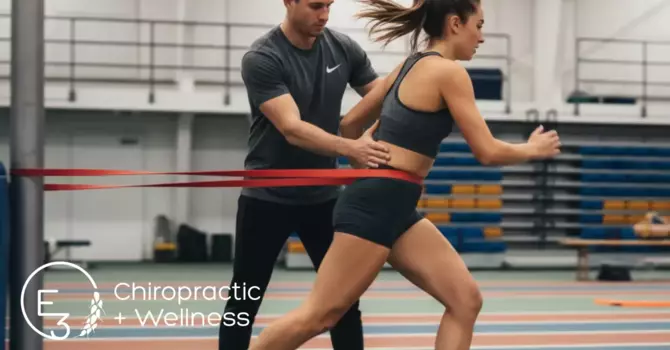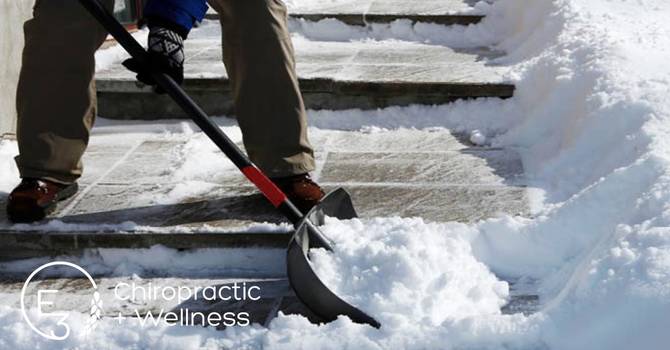.jpg)
Do you find yourself wincing with every step, as if walking on pins and needles?
Foot pain can be an excruciatingly common ailment, affecting individuals of all ages and activity levels. Whether you're an avid runner, a busy parent constantly on the move, or spend long hours on your feet at work, foot pain can seriously damper your day-to-day activities.
Injury to your Achilles Tendon is one of the most common causes of foot pain!
This post will help you understand what an Achilles injury entails, and three things to do after you injure your Achilles!
Understanding Achilles Tendinopathy
Achilles tendinopathy is a prevalent condition characterized by pain, stiffness, and swelling in the Achilles tendon, the thick band of tissue that connects the calf muscles to the heel bone.
This vital tendon is crucial in various activities, including walking, running, jumping, and standing on tiptoe.
Achilles tendinopathy typically develops due to overuse or repetitive strain on the tendon, often stemming from activities like running long distances, participating in sports that involve sudden stops and starts, or engaging in activities that require repetitive jumping motions. As the tendon is subjected to excessive stress over time, it can become irritated, inflamed, or even develop small tears, resulting in discomfort and dysfunction.
Individuals with Achilles tendinopathy often experience pain and stiffness at the back of the heel, particularly upon waking in the morning or after periods of rest. The pain may improve with light activity but worsen with more intense exercise or prolonged periods of standing. If left untreated, Achilles tendinopathy can lead to further degeneration of the tendon and increase the risk of tendon rupture, highlighting the importance of early intervention and appropriate management strategies.
Three Things to Do After you Injure Your Achilles
1. Relative Rest
Relative rest is a crucial component of the recovery process following an Achilles tendon injury.
Complete immobilization is typically unnecessary and should only be used in severe injuries. Relative rest allows for controlled movement and activity that promotes healing without exacerbating the condition.
During this period, individuals are encouraged to avoid activities that place excessive stress on the Achilles tendon, such as running, jumping, or high-impact exercises. Instead, focus should be placed on gentle stretching and strengthening exercises that maintain flexibility and improve the integrity of the tendon.
Additionally, modifications to daily activities may be necessary to reduce strain on the affected tendon, such as avoiding prolonged periods of standing or walking on uneven surfaces. By allowing the tendon time to heal while gradually reintroducing activity in a controlled manner, relative rest plays a vital role in restoring function and preventing further injury to the Achilles tendon.
Strengthen Calf Muscles
Strengthening the calf muscles is paramount during the healing process of an Achilles injury as it plays a pivotal role in supporting and stabilizing the affected tendon.
The calf muscles, including the gastrocnemius and soleus, directly influence the movement and function of the Achilles tendon. By engaging in targeted strengthening exercises, such as calf raises and eccentric loading exercises, individuals can improve the overall strength and resilience of these muscles, thereby reducing the strain placed on the injured tendon during daily activities.
Additionally, strong calf muscles help to maintain proper biomechanics and alignment of the lower leg, which is crucial for preventing excessive stress and strain on the healing tendon. As the calf muscles become stronger, the tendon also becomes stronger, allowing it to absorb forces better, reducing the risk of re-injury. Incorporating calf-strengthening exercises into a comprehensive rehabilitation program accelerates the recovery process and enhances functional outcomes, allowing individuals to return to their normal activities with confidence and reduced risk of recurrence.
Gradual Return to Activity
A gradual return to activity is essential when rehabilitating an Achilles injury to prevent re-injury and promote optimal healing.
Rushing back into full activity too soon can place excessive stress on the healing tendon, increasing the risk of setbacks or exacerbating the injury.
Instead, a phased approach allows the tendon time to adapt and strengthen gradually. Starting with gentle, low-impact activities, such as walking or stationary cycling, helps to rebuild strength and flexibility while minimizing strain on the Achilles tendon.
As symptoms improve and confidence grows, individuals can gradually increase the intensity and duration of their workouts, incorporating activities like jogging, jumping, and agility drills.
Close monitoring of symptoms and progression is crucial throughout the rehabilitation process, with adjustments made as needed to ensure the tendon's continued recovery. By gradually systematically reintroducing activity, individuals can safely rebuild strength, restore function, and reduce the risk of recurrence, ultimately facilitating a successful return to their desired activity level.
Get Your Pain Assessed at E3!
When it comes to addressing foot pain and preventing future injury, it's crucial to seek expert guidance and personalized care. At E3 Chiropractic + Wellness in Saskatoon, our team of skilled chiropractors and physiotherapists specializes in treating various musculoskeletal conditions, including Achilles tendinopathy.
Conclusion
Don't let foot pain hold you back from living your best life. Whether you're struggling with plantar fasciitis, tendinopathy, or any other musculoskeletal issue, the experienced team at E3 Chiropractic + Wellness is here to help.
Click HERE to schedule your appointment today and take the first step towards a pain-free future. Your feet will thank you.





